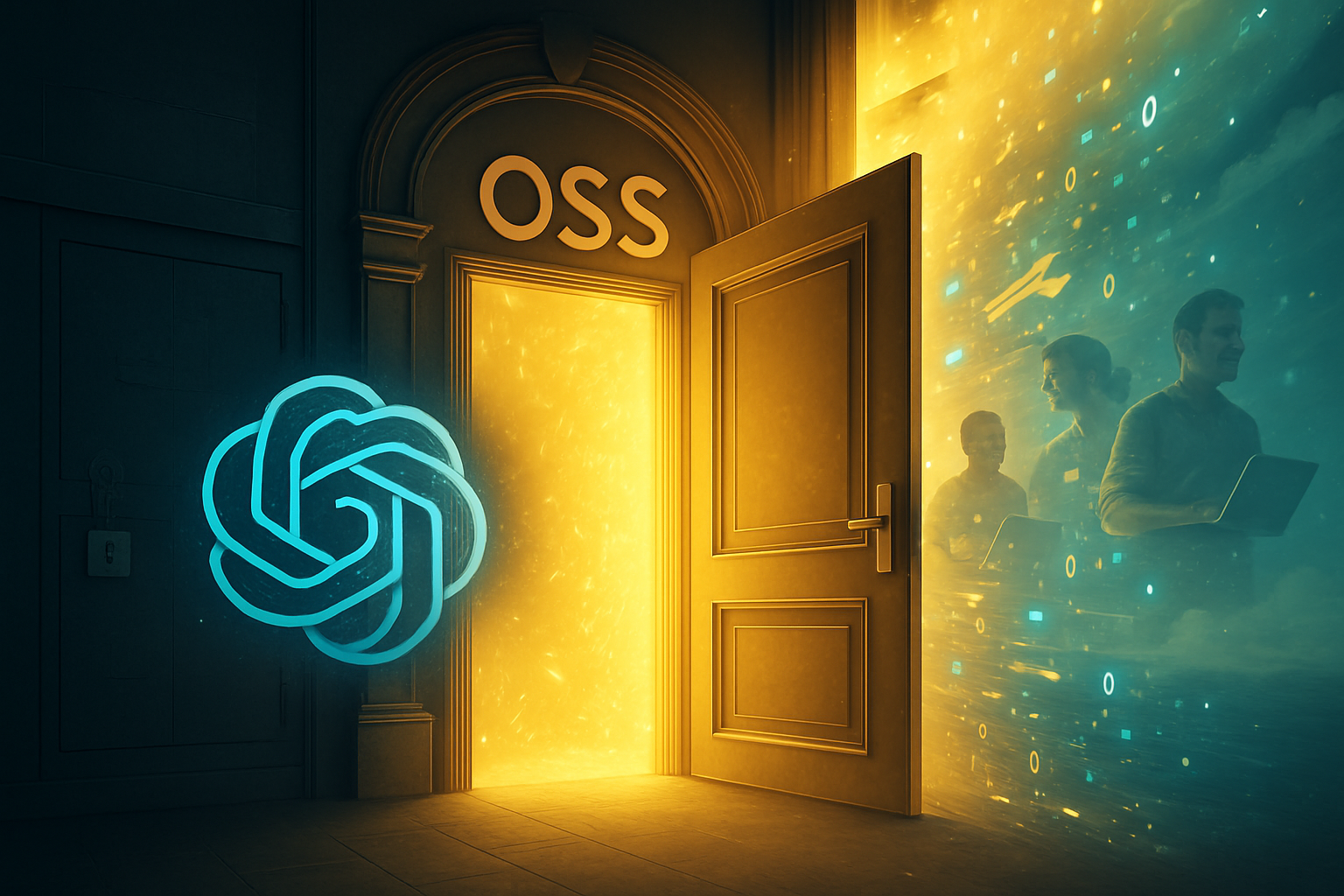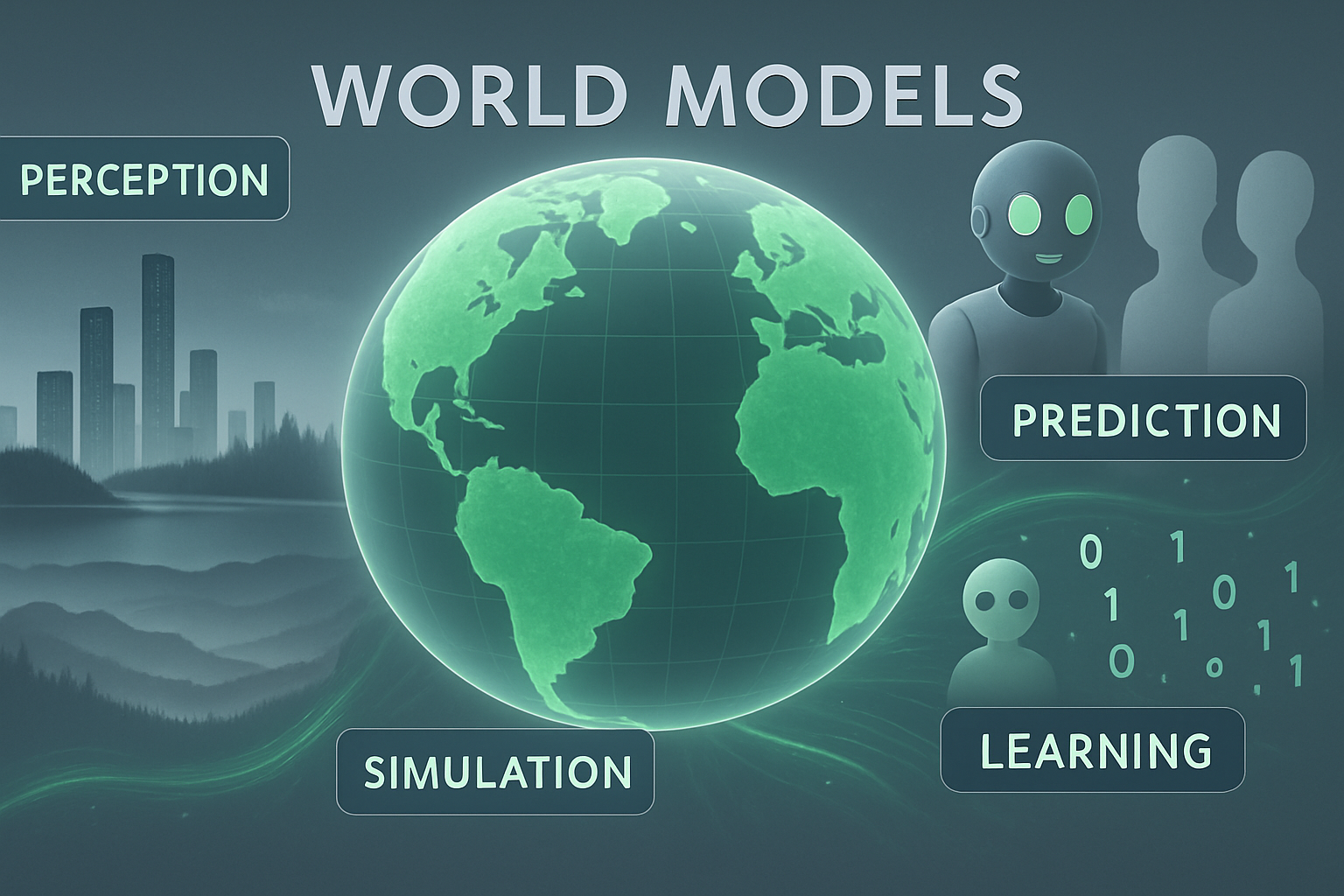Christmas in August: An AI Story

Models Pushing the Frontier of AI
This week is going to feel like Christmas in August, with today alone seeing 3 different models push the frontier in very different ways.
OpenAI releases its first Open Source model since GPT-2, DeepMind's Genie 3 is an interactive world-builder with consistent memory, and Claude 4.1 continues to push the frontier of agentic coding capabilities.

OpenAI-OSS: The Open Source Game Changer
The Open Source Impact Revolution
Six years after the release of GPT-2, OpenAI has returned to its open source roots with a bang. The release of gpt-oss-120b and gpt-oss-20b marks the most significant open weight model release of 2025, directly challenging the dominance of proprietary systems.
What Makes OpenAI-OSS Exceptional
These aren't just any open models—they're reasoning powerhouses designed to match GPT-4 and o1-mini performance across coding and reasoning tasks. The models use chain-of-thought reasoning with full transparency, meaning you can see exactly how they arrive at their answers.
The breakthrough is accessibility: the 20B model runs on consumer hardware with just 16GB of RAM (think iPhones and tablets). While the larger 120B version delivers professional-grade performance that can run on high-end laptops and workstations. Both are released under the Apache 2.0 license, meaning businesses can use them freely without restrictions.
Community Response: Cautious Optimism
The AI community's reaction has been measured but generally positive. Developers on Reddit and Hacker News praise the Apache 2.0 license and the ability to run locally. As one LocalLLaMA community member noted: "The 20B is the only model below 200B that spits out correct advanced TypeScript in one shot for me".
However, early testing reveals some concerns. Several developers report higher than usual hallucination rates, though the raw power of the models is undeniable. The consensus: these are powerful tools that require careful handling.

Google Genie 3: The World Model Revolution
Interactive 3D Worlds That Remember Everything
While not yet released to developers, Google DeepMind's Genie 3 represents the next frontier in world models—AI that generates persistent content, interactive 3D environments from simple text prompts. World Maps are how agents and more importantly robots will be trained before being released into the world, allowing them to run simulations potentially billions of times to become experts in their jobs.
Three Revolutionary Capabilities
- Real-Time Interactivity
Unlike previous world models limited to seconds of interaction, Genie 3 maintains multiple minutes of consistent 3D environments at high quality. Users can navigate, modify objects, and see their actions persist over time. - Consistent World Memory
The breakthrough feature: Genie 3 remembers what it creates. Paint a wall, look away, return—the paint is still there. The memory is an emergent capability that wasn't explicitly trained into the model, rather it was developed through the models training process. - Promptable Events
Beyond navigation, users can modify the world in real-time through text commands. Want to add a thunderstorm or spawn a dragon? Simply type the request and watch the world transform.
The AI community's response to Genie 3 has been electric. On r/singularity, reactions ranged from "holy shit" to "The gaming industry is done for". Gaming industry observers see both massive potential and significant challenges—while the technology is impressive, it's still a ways away from replacing human-created content.
Enterprise and Research Applications
DeepMind positions Genie 3 as more than entertainment—it's a training ground for AGI. The company is already testing its SIMA agent in Genie 3 worlds, allowing AI to learn through embodied experience rather than just text training.
World Models are considered to be the key to unlocking robotics and a path to actual Artificial Super Intelligence. World Models will allow agents, robots and models to practice real-world scenarios in a safe environment, potentially, billions of times before they ever interact with the real world.
Current limitations include:
- Limited to a few minutes of continuous interaction
- Challenges with complex multi-agent scenarios
- Text rendering difficulties
My jaw hit the floor when I watched this vide. The speed at which this technology is evolving is mind numbing, I actually got chills after watching the whole 2 minutes.

Anthropic's Opus 4.1: The Coding King Gets Stronger Incremental Excellence in Agentic Tasks
While not as flashy as the other releases, Claude Opus 4.1 represents excellence in the areas that matter most to developers and enterprises. In recent months Anthropic's continued to take away OpenAI's stranglehold on enterprise market share, this release will likely accelerate that change.
Real-World Coding Improvements
Opus 4.1 shows significant improvements in complex coding tasks, particularly in multi-file code refactoring and debugging. The model excels at understanding large codebases and making precise corrections without introducing new errors.
Enhanced Agentic Capabilities
Beyond coding, Opus 4.1 excels at long-horizon agentic tasks—complex, multi-step operations that require sustained reasoning over extended periods. This makes it particularly valuable for business process automation and complex research tasks.
Key Improvements:
- Advanced reasoning: Better at in-depth research and data analysis
- Memory management: Enhanced context handling for long-running tasks
- Agent performance: Superior accuracy on complex, multi-step workflows
Community Response and Availability
The developer community's reaction to Opus 4.1 has been more subdued but appreciative. On the ClaudeAI subreddit, users report cleaner code suggestions and quicker reasoning, though some note the improvements feel incremental rather than revolutionary.
- Available immediately in GitHub Copilot, Cursor, and Claude Code
- Same pricing as Opus 4 ($15/1M input, $75/1M output tokens)
- Anthropic promises "substantially larger improvements" in coming weeks
What This Means for Different AI Communities
For AI Builders and Developers
Yesterday's releases cover 3 major areas in AI; Open Source Software, World Models and Agentic capabilities. OpenAI-OSS provides unprecedented open source reasoning capabilities for local development and is inline with the US's strategy around open source models, Genie 3 opens new frontiers in interactive AI applications and simulations for World Models, and Opus 4.1 refines the coding tools developers use daily as it continues to move Enterprise use cases forward.
For Enterprise Leaders
OpenAI-OSS offers cost-effective alternatives to proprietary models with full control over data and deployment, Genie 3 suggests new possibilities for training simulations and product demonstrations, and Opus 4.1 provides the reliability enterprises need for production agents.
We're seeing more OSS models being released with give Business Leaders more options to considering when developing their AI strategy. When decided on cloud v. on-prem hosting there's still the traditional factors to consider, like model TCO.
For SMB Executives
Small and medium businesses finally have access to frontier AI capabilities without enterprise-level costs. OpenAI-OSS can run on local hardware, eliminating ongoing API costs and data privacy concerns, while Opus 4.1 provides enterprise-grade coding assistance at accessible price points.
The Bigger Picture: Three Visions of AI's Future
Today's releases represent three different philosophies about AI's future:
OpenAI-OSS embodies the vision of democratized AI—powerful models available to everyone, advancing innovation through open collaboration rather than closed competition. This release validates the open source approach and provides real alternatives to expensive proprietary systems. This also aligns with the US AI Action Plan's focus on Open Source Models that President Trump announced just over a week ago.
Genie 3 represents AI as world builder—systems that do more than just process information they create persistent, interactive realities where both humans and AI agents can learn and experiment. This points toward a future where AI becomes our creative collaborator in building experiences. Genie 3 could represent a catapult in the AI space enabling robotics and use cases that were previously only science fiction.
Opus 4.1 exemplifies AI as reliable partner—incremental improvements that make AI systems more trustworthy and capable in the specific domains where businesses need them most. This represents the steady march toward AI that businesses can depend on for critical operations.
Together, these releases kick off what I'm going to call Christmas in August—the when AI became simultaneously more open, more interactive, and more dependable.
The AI revolution isn't coming—it arrived today, in three different flavors, each pointing toward a different but equally transformative future. For AI builders, this means more tools and options. For enterprises, it means clearer paths to adoption. For everyone else, it means AI is finally becoming the practical, accessible technology it always promised to be.
Want to talk about what this means for your organization? Let's talk about how I can help you on your AI journey.
Written by JD Fetterly - Data PM @ Apple, Founder of ChatBotLabs.io, creator of GenerativeAIexplained.com, Technology Writer and AI Enthusiast.
All opinions are my own and do not reflect those of Apple.
